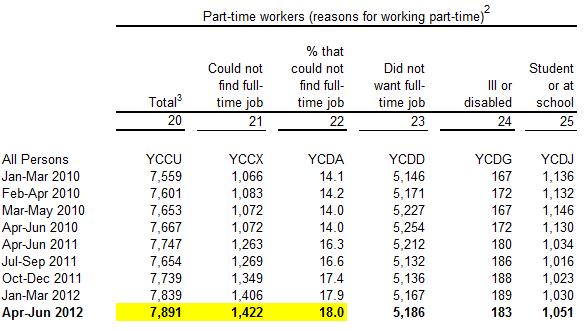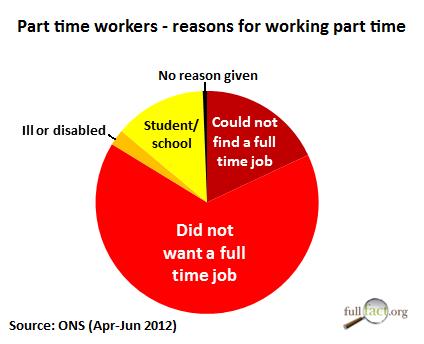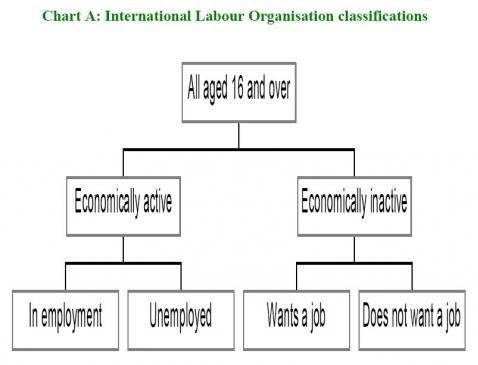Are 4 in 5 people seeking full time work finding jobs?
"Of those who are looking for full-time jobs, 4/5 of them are finding them, so about 1/5 of those looking for full-time work are not finding full-time work and settling for part time work."
Iain Duncan Smith, ITV News (quoted) and LBC Radio
Yesterday's routine release of official Labour Market Statistics - showing rises in employment and falls in unemployment - has dumfounded economists in light of recent grim GDP figures.
The positive signals from the labour market have nevertheless provided an opportunity for the Government to strike a more upbeat tone. The Work and Pensions Secretary Iain Duncan Smith was among those optimistic about the current figures, stating that four fifths of people looking for full-time jobs are succeeding in finding them.
Join 72,953 people who trust us to check the facts
Sign up to get weekly updates on politics, immigration, health and more.
Subscribe to weekly email newsletters from Full Fact for updates on politics, immigration, health and more. Our fact checks are free to read but not to produce, so you will also get occasional emails about fundraising and other ways you can help. You can unsubscribe at any time. For more information about how we use your data see our Privacy Policy.
But has the Secretary of State read the figures correctly?
Analysis
Beneath the headline labour market figures released by the Office for National Statistics (ONS) are no fewer than 63 datasets that allow users to dig down into the finer detail of the latest release.
However, in spite of having this many choices, the ONS confirmed to Full Fact that not one dataset provides a breakdown of how many people are seeking full and part time work.
Without any further research, it's clearly impossible for the Work and Pensions Secretary to draw conclusions about "those looking for full time jobs" because we simply have no way of knowing how many people this concerns. So where are Mr Duncan Smith's figures from?
The most likely source is found in dataset EMP01 on 'Full time, part time and temporary workers'. This tells us the reasons given by employees for working part-time:

[all numbers in thousands /² Covering employees and self employed only]
The 18 per cent figure shows that just under one in five part time workers "could not find a full time job". A quick look further back in the data confirms that, in 2009, the same per cent figure ranged from 11 to 13 per cent. These figures match those given by Mr Duncan Smith on LBC radio, when he went on:
"Even during the height of the period prior to the recession, prior to 2009 when there were difficulties, something like 11, 12 per cent of those people looking for full time work could only get part time work... The number today is about 18, 19 per cent."
However, if the Work and Pensions Secretary is drawing these conclusions from the data, he is wrong to do so. The figures only tell us about people's reasons for being in part-time work rather than the success rate of everyone who is seeking full time employment.
What the figures apparently in use do show is that, while one fifth of part time workers do so because they cannot find a full time job, the rest either aren't seeking full time employment, are ill or disabled, or are still students or at school:

It's also worth pointing out that it's much harder to arrive at a figure for the number of people seeking employment - be it full- or part-time - than Mr Duncan Smith seems to acknowledge.
The International Labour Organisation categorises people in the jobs market by whether or not they are 'economically active'. This distinguishes those who are in or actively seeking work from those who are not.

The jobseekers apparently referred to by IDS are those 18 per cent of people in part-time work who weren't able to secure a full-time job. These people are classed as 'Employed' under the ILO definition.
However the number of people who want a full-time job is a much broader category, and can include people from both the unemployed and economically inactive camps, and they aren't measured specifically by the ONS.
Conclusion
While we can't be certain that Mr Duncan Smith is using the dataset about full- and part-time workers, there does not appear to be any data by which the Work and Pensions Secretary can substantiate his claim. There is simply no measure for the number of people seeking full-time work, and hence no measure for the proportion of whom are successful.